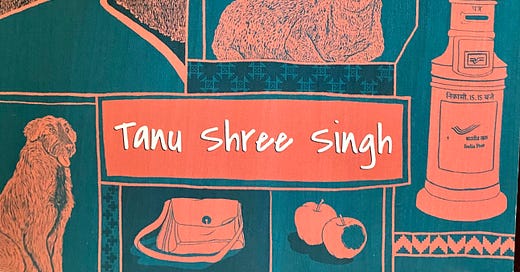“The Letter to Lahore” by Tanu Shree Singh. Published by Duckbill. A compelling story of three children who decide to show up for their country in the fight for freedom by undertaking a risky mission.
The story is set in Himachal Pradesh in the winter of 1921. The region was then part of the Punjab province under the British rule. Luxmi and Bhola are eleven year old twins who live with their Nani (maternal grandmother) and Mama’s family in the village of Sarchi. Their mama’s son Umesh is ten years old. The three children lead an idyllic life in the village helping out their Nani in her chores. The times are rife with the struggle for freedom gaining momentum gradually. Padam, another mama of theirs who is fondly called as “Dak Chacha” by them is a postman in Simla. Samuel Stokes, an American who has settled in Kotgarh near Simla has written a set of articles against the unfairness of the Begar system imposed by the British on the Indians. These articles have to be delivered to the newspaper office in Lahore for them to be published. There isn’t much time left and the police have been on high alert. They are looking for the articles and suspect Dak Chacha.
When Padam decides to visit Sarchi before going to Lahore, the children especially Luxmi are excited. They do not know of the brewing storm until they find policemen looking for Dak Chacha. Luxmi learns that Dak Chacha is involved in something big. She finds a mysterious envelope with no address in his satchel. She gets to know from him that they need to fight for their freedom. The unjust Begar system and other practices imposed by British regime must be put to an end. This makes her determined to contribute her bit by helping Dak Chacha in his mission. But they are just children and have never been beyond Jalori Pass. How can they do that? Will they be able to undertake this risky mission of delivering the letter? Read the engrossing story to find out what the children do and if the letter can reach Lahore in time.
The book kept us enthralled throughout. We just couldn’t let go of the book wondering what would happen next. We were worried for the children and hoping that they or Dak Chacha wouldn’t get caught by the police. Through this deftly woven narrative we got a glimpse of how life must have been during the days of the Raj in the hills of Himachal. We also got a peek into the idyllic life of the villagers there. The feistiness of Luxmi, the unsung hero that Bhola turned out to be and the endearing sidekick that Umesh proved to be were some of the things that we loved. Even Sheru who is their dog played his part perfectly well proving to be a true comrade to the children. Through these lovely children, the message of what it means to show up for one’s country even if it is by doing what seems to be a small task has been portrayed beautifully. The themes of courage, friendship, resilience, facing fears, being there for each other, hope, kindness and responsibility make the book a MUST READ.
Some social conditions of the times have also been woven into the story. Women could not hold property in their name. Luxmi and Bhola’s mother was forced to remarry after their father’s death as she could not retain his property and had to hand it over to his family. They yearned to be with their mother but could not as their old stepfather didn’t want them. Girls were not allowed to go to school and were married off early. The people of Luxmi’s community could only help build a temple but were not allowed inside once it was consecrated as they were from a lower caste. Luxmi looking forward to Stokes Sahib building a school in Kotgarh made us feel hopeful that children like her at that time must have got a chance to study once it was ready. The book is a part of the “Songs of Freedom” series which is one of our favourites. This series explores how the lives of children across India might have been during the struggle for Independence. Like the other books from the series, there is a historical note section at the end which talks about how much of the story is fiction and who/what are the people/events which really happened.
P.S. - The other books from the series that we have read and enjoyed so far are “The Chowpatty Cooking Club”, “That Year at Manikoil”, “The Train to Tanjore” and “A Conspiracy in Calcutta”.
Recommended Age
The book is apt for children aged 10 and above.
Reasons to Read
To get to know about India’s freedom struggle from the unique perspective of children living in those times.
To get a glimpse of how the life of people in 1920s India (Himachal in particular) was.
Disclaimer - We received this book from the publisher, Penguin India (Duckbill), for review. Thank you to Mansi, from Penguin, for sending across the book!





